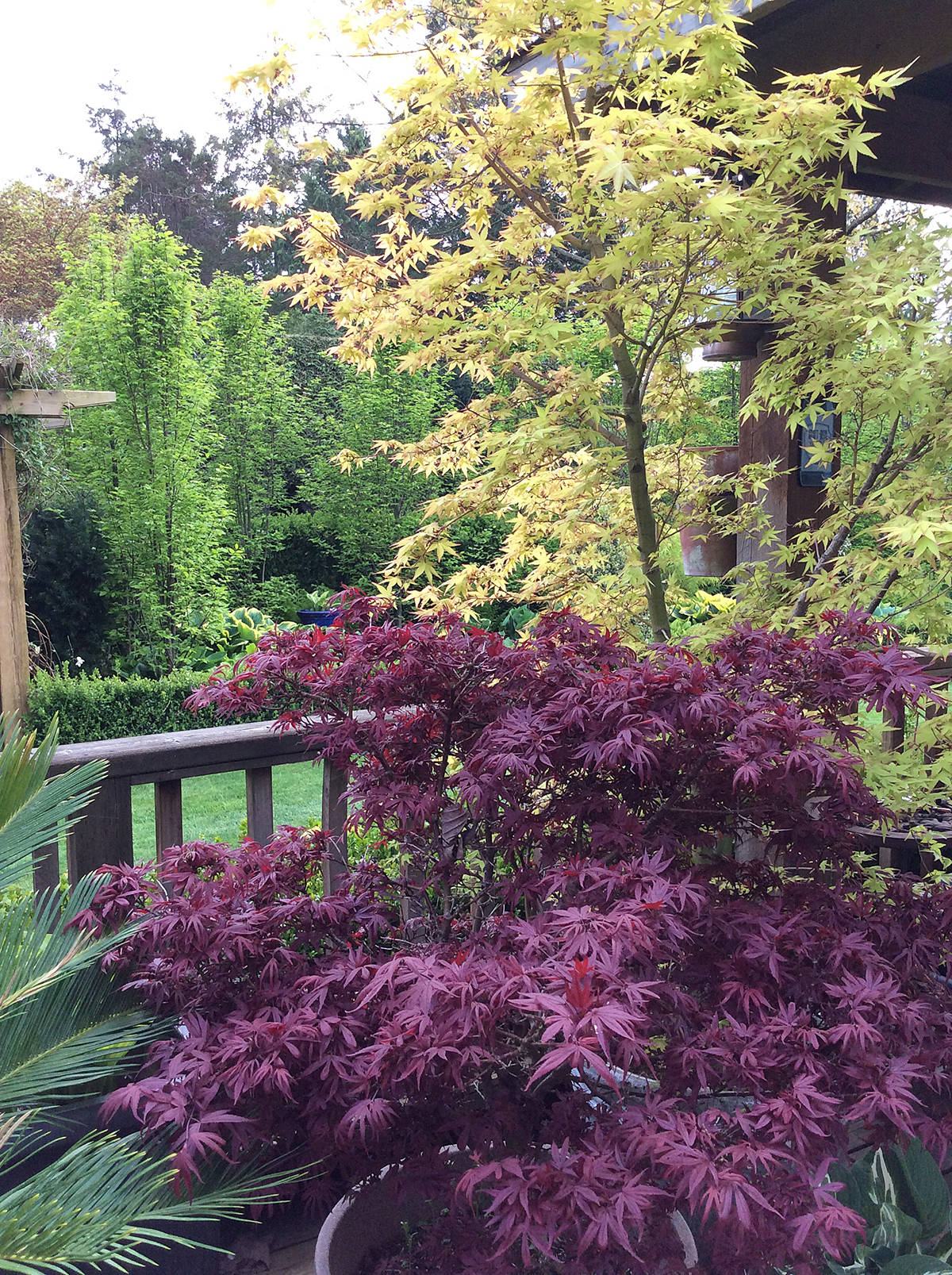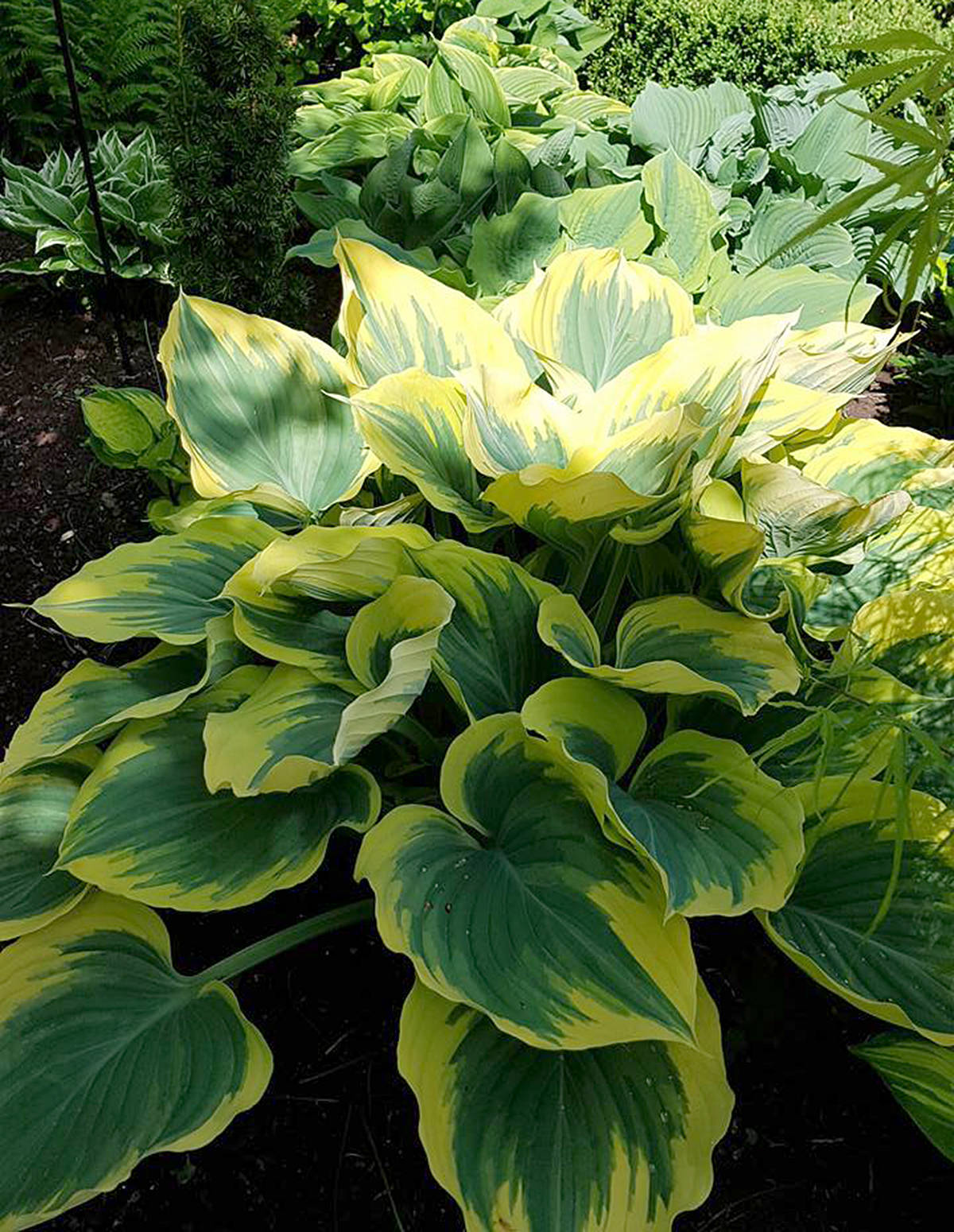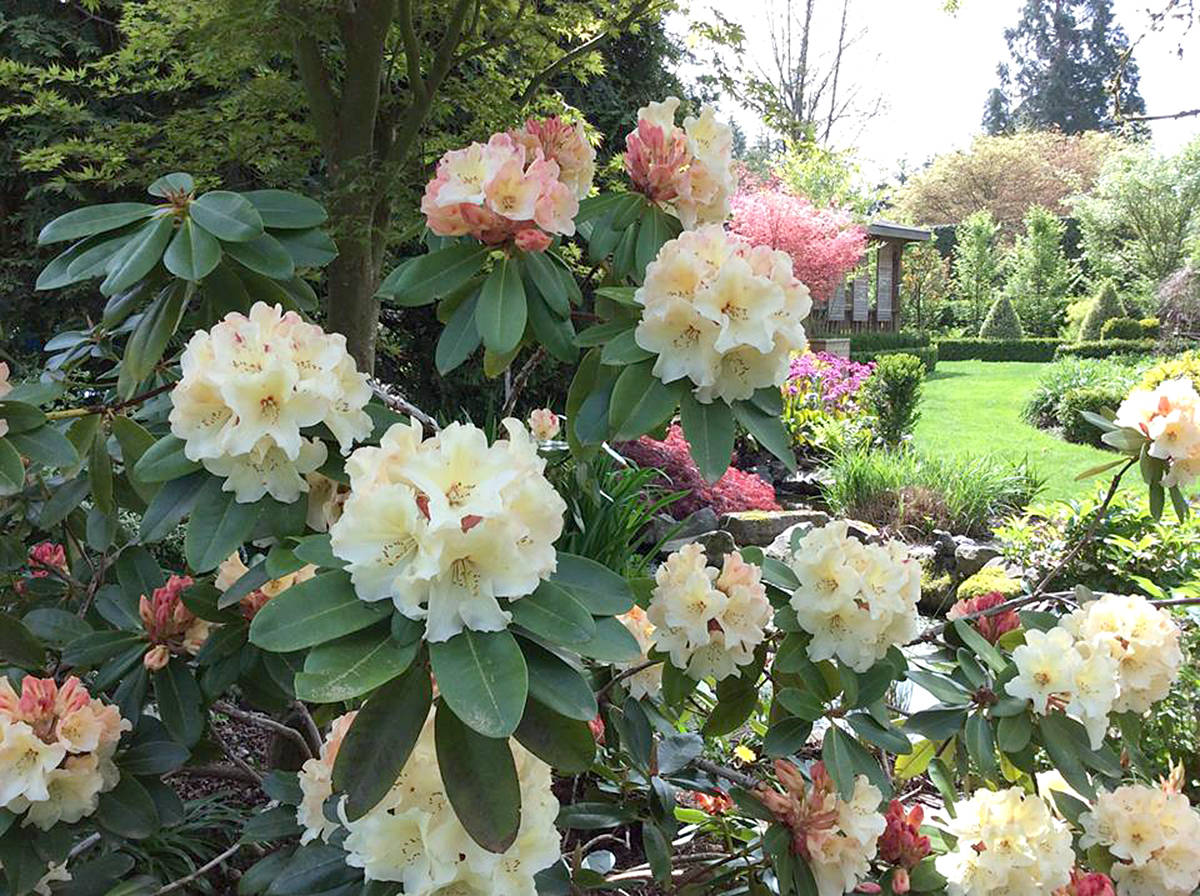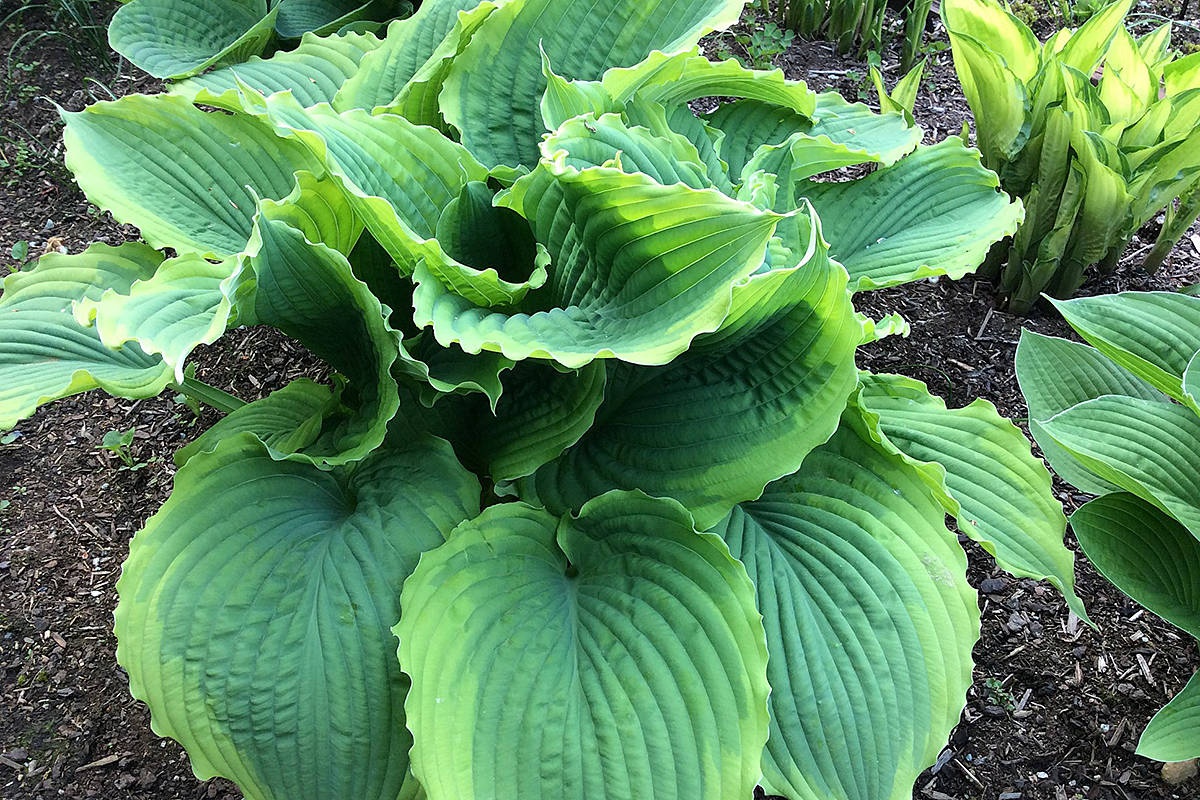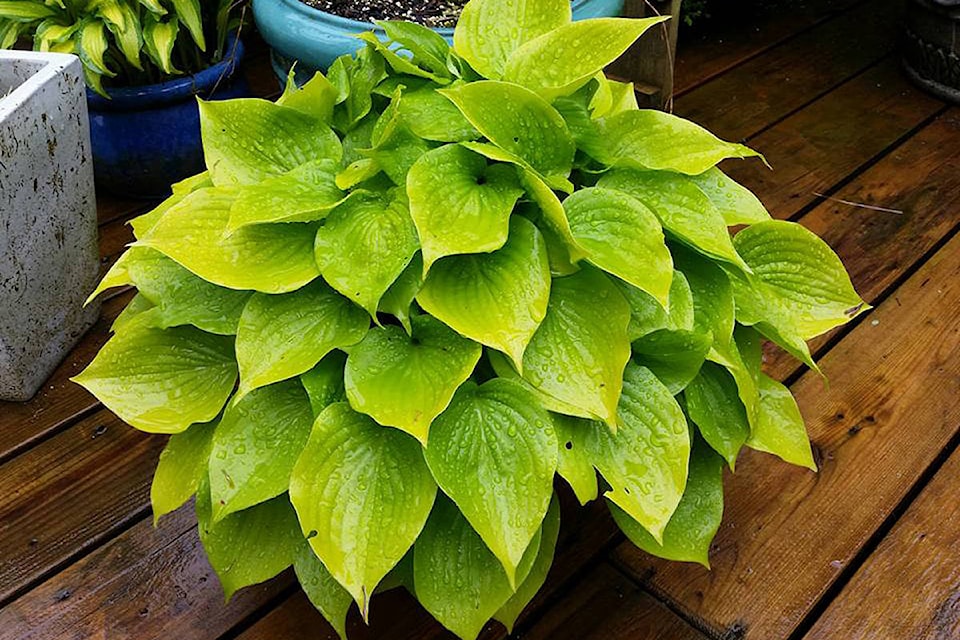Spring has sprung!
After such a long winter and somewhat slow start to spring, the recent mix of rain and warm temperatures has definitely awoken the garden.
The rhododendrons have either begun to bloom or are preparing to; the perennials are up (especially the hostas) and look fresh and lovely; and the trees have that lovely soft new growth, and in particular the Japanese maples.
This is the time of year when the maples, the rhodos, and the hostas are easily the stars of the garden.
Japanese maples are wonderful additions to any garden, and can be grown either in the ground or easily in containers. We have some that have been in pots for over five years and are quite content on our deck, adding lovely shades of pinks, reds, oranges, and yellows.
In addition to the standard split leaf Japanese maple (Acer palmatum), a little research will allow gardeners to find a few more interesting hybrid varieties such as A. palmatum ‘Orange Dream’ with its bright red edged gold foliage or A. palmatum ‘Shaina’, a very compact cranberry red that is spectacular in a container.
Planted in a good potting mix with reliable drainage, these desirable trees will give years of beauty for very little effort – a simple watering schedule and spring feed of a balanced fertilizer and they will be happy for years.
A sunny morning location with some protection from the hot afternoon sun will keep the tender leaves a lovely color all spring and summer.
Rhododendrons have been the backbone of many gardens for a number of years.
Not only do they produce delightful flowers, but the evergreen foliage gives our gardens structure throughout the winter months.
There are a multitude of rhododendrons available for gardeners, and while there are many different shades of pinks, I am personally attracted to the soft yellow, peach, and apricot tones and find that they blend into the rest of the garden a little easier than a more magenta pink.
The deep red hues of a long time favourite, R. ‘The Hon. Jean Marie de Montague,’ attracts much attention when she is in bloom; as well as a long-time standard, R. ‘Virginia Richards,’ with her very pale pink blooms.
There are a wide selection of dwarf rhodos as well as the larger varieties – but don’t be afraid to prune when needed. The best time to prune is right after blooming as the new growth for the following year develops quickly after bloom.
We have had several rhodos that suffered from a lot of damage in the winter (heavy wet snow), and have pruned back drastically, only to have the plant grow back again with gusto the following year.
Take care when fertilizing the rhodos though, as their roots are quite tender to chemicals. When planted in good soil with the right pH, they should not need much at first.
If the ground is poor and you do fertilize, try to use a slow release form such as Osmocote as it releases gradually over time and does not over stress those tenderroots.
Hostas, while a great plant all spring and summer, are easily looking at their best in May.
The new growth almost bursts from the ground (for the larger varieties, we call it ‘erupting’), with the leaves unfurling with a few days of nice weather. This is the time to feed them (they love a well-rotted compost, or the afore-mentioned Osmocote), and watch as they grow and fill in the shade garden.
Mix hostas with ferns, astilbes, brunneras, and epimediums for a truly stunning display of colour and texture.
While being shade lovers, remember that the hostas also need a certain amount of light – not direct sunlight (although there are quite a few varieties that are sun tolerant) and love dappled light under trees that will protect them from the hot afternoon sun.
Many of the hostas produce various shades of lavender and purple flowers in the late summer, but try to add some that have white flowers as they tend to be fragrant. There are a number of really fragrant ones (such as H. Frozen Margarita, H. Fried Bananas and H. Sunset Grooves) that have surprised me with how intensely scented they are.
And soon, it will be peony time. Love this time of year!
– Pam Erikson is owner of Erikson’s Daylily Gardens and Perennials and president of the Langley Garden Club
RELATED: Last months’ Green Thumb column - the April checklist
